
|
|
|
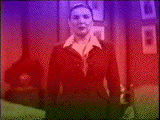
|
This is how many people had their first view of 'colour'
television - in the 1950's you could buy a 'colourising'
filter, place it over your existing black and white screen,
and let your imagination do the rest... John Logie Baird,
the pioneer of television, was working on stereoscopic
colour television shortly before his death, and the
Americans were conducting experiments. But the technology
was very complex; the problem was how to transmit colour
information alongside an existing black and white image,
therefore maintaining 'backwards' compatibility with
existing receivers.
|
|
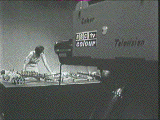
|
By 1959 the BBC started to experiment using the system of
transmitting colour pictures developed in the USA, which had
evolved into a standard laid down by the National Television
Standards Committee, or NTSC. However this NTSC system
suffered from being the first of its kind - colour hue was
(and still is) notoriously difficult to reproduce accurately
and consistently, hence its unofficial title of 'Never Twice
the Same Color'. Low power 405-line NTSC test transmissions
were from Alexandra Palace, using specially manufactured
receivers.
|
|
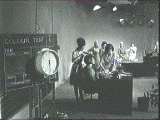
|
Later the French developed SECAM (Sequential Colour with
Memory), and Telefunken in Germany developed PAL (Phase
Alternate Line) which represented two differing approaches
of solving the colour problems encountered with NTSC, and
the BBC experimented using both, though there were other
problems which were not just restricted just to the actual
system being used. The insensitivity and inaccuracy of early
colour tv cameras and its associated circuitry meant that
without adjustments the resulting picture either had a
colour cast and/or made flesh tones look too red, so extra
studio lighting and make-up was required.
|
|
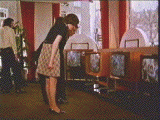
|
After much deliberation, the government chose the PAL
system, which although was more complex (hence expensive) it
gave the best results. Most of Europe also chose PAL, and
BBC2 started its UHF 625-line colour service in July 1967,
though initially only a few programmes in the schedule were
actually in colour. Early programmes included that year's
Wimbledon tennis tournament, The World About Us (basically
stock colour documentary footage - the first programme
featured volcanoes), and imported series such as Star Trek.
By the end of the 1960's BBC1 and ITV both started a 625
line UHF colour service.
|
|
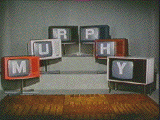
|
There were many more manufacturers of television
receivers in the 1960's than there are today; Sobell,
MacMichael, GEC, Ekco, HMV, ITT, and Ferguson were just a
few of the more notable ones, though later on more obscure
models were imported to meet increasing demand. Early colour
television sets used valves and were very bulky, expensive,
unreliable, had poor colour quality, and some sets were
prone to overheating. After a succession of house fires
people were advised to stay in the same room as their
television for one hour after it was switched off.
|
|

|
By 1976 colour television sets were smaller, far more
reliable and they no longer caught fire like their early
counterparts. Portable colour televisions became available,
though most of these were still tied to the mains supply due
to their high power consumption; the exceptions usually had
10 inch or smaller screens (such as models produced by Sanyo
and Sony). Picture quality became vastly improved courtesy
of new tube designs and circuitry, and the falling price of
the receivers meant that most people now owned a colour
television. 1976 also saw colour transmissions finally
reaching the Channel Islands.
|
|
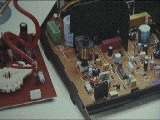
|
By the end of the 1970's manufacturers were looking to
add more features to their televisions, and the advent of
reasonably priced silicon chip circuitry meant that special
features such as teletext could be added (a free information
service whereby information is transmitted as 'pages') as
well as (in some cases) other short-lived features such as
'viewdata' (a primitive internet-style service using crude
block graphics as well as text) and bat-and-ball style video
games. Teletext was the only feature that became popular
because it was cheap to add and free to use, together with
remote control operation and electronic tuning.
|
|

|
There was a craze in the early 1980's for what is known
as 'spatial' sound, ie. the creation of a stereo effect
using a single (or mono) sound source. Such 'stereo'
televisions also had stereo sound inputs so that the stereo
output from the new generation of VCR's with stereo sound
capability could be plugged in for true stereo sound from
pre-recorded tapes with stereo soundtracks. Stereo sound
from television transmissions in the UK had to wait for the
advent of NICAM digital stereo encoding by the end of the
decade (though the BBC did not start a full stereo service
until September 1991).
|
|
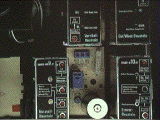
|
The 1980's and 1990's saw further developments in
television design and technology. As early as the mid 1970's
the German set maker Grundig had introduced a modular
construction for their receivers, which featured modules
which could be easily plugged and unplugged, and had
diagnostic lights on them so the set could even tell the
engineer which part needed replacing. This idea never caught
on, but the basic concept of making the set simpler and
cheaper to make remained. In 1983 Ferguson introduced the
TX100 chassis, with some impressive claims (23% fewer
adjustments, 5% fewer components, etc.)
|